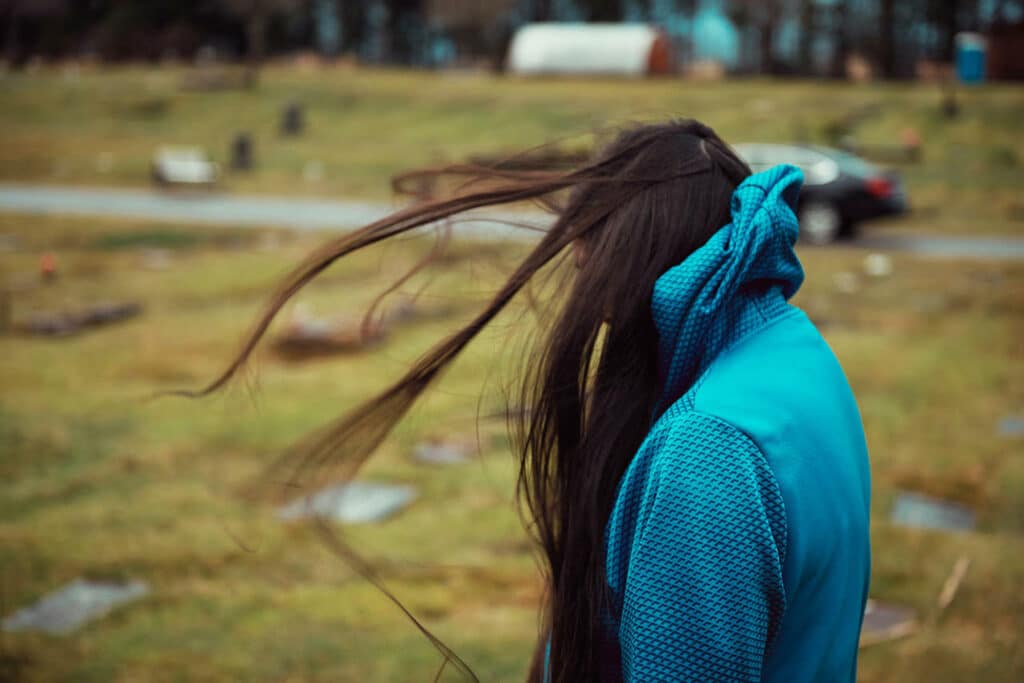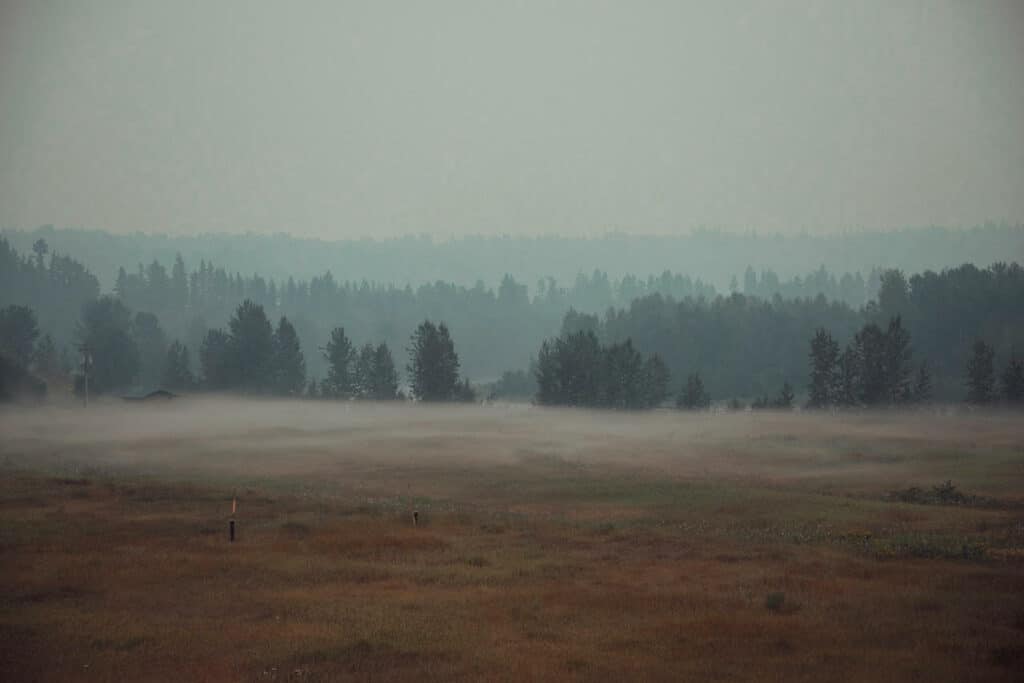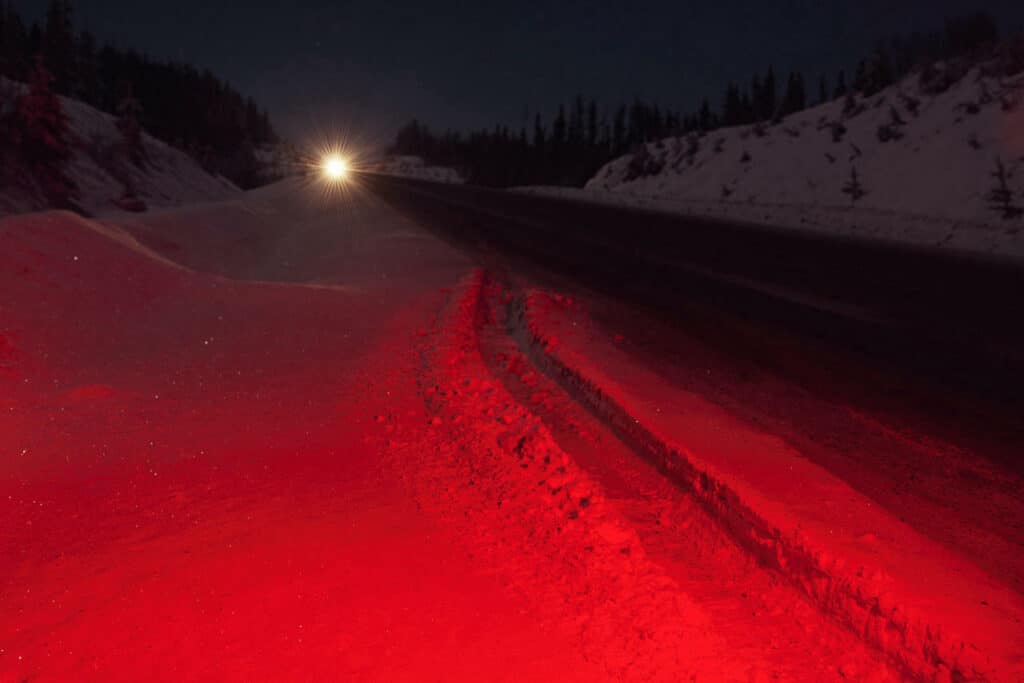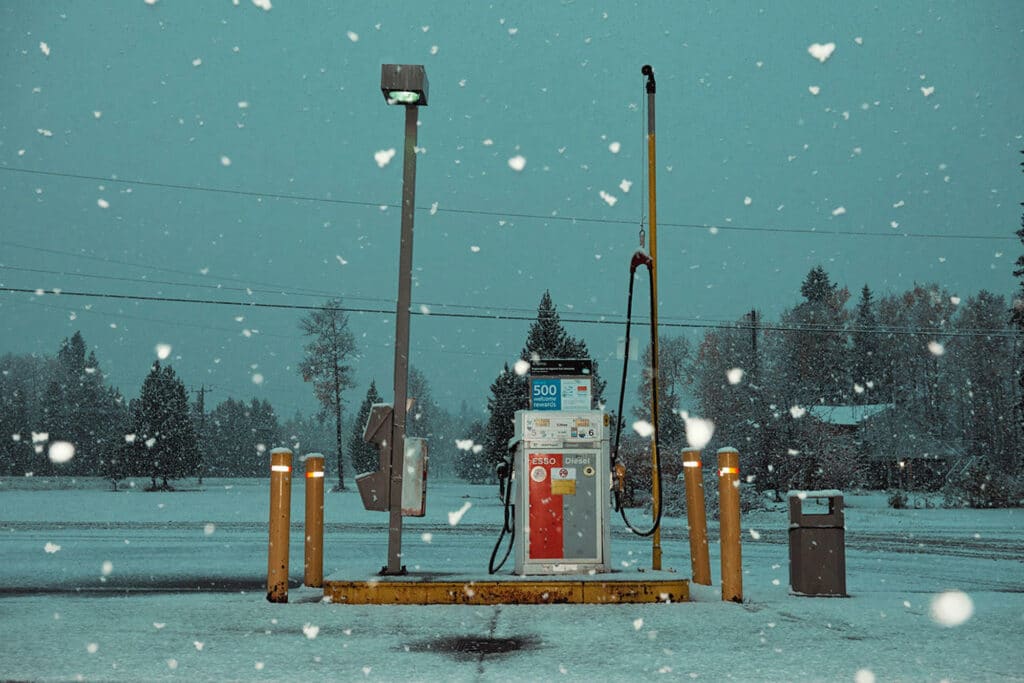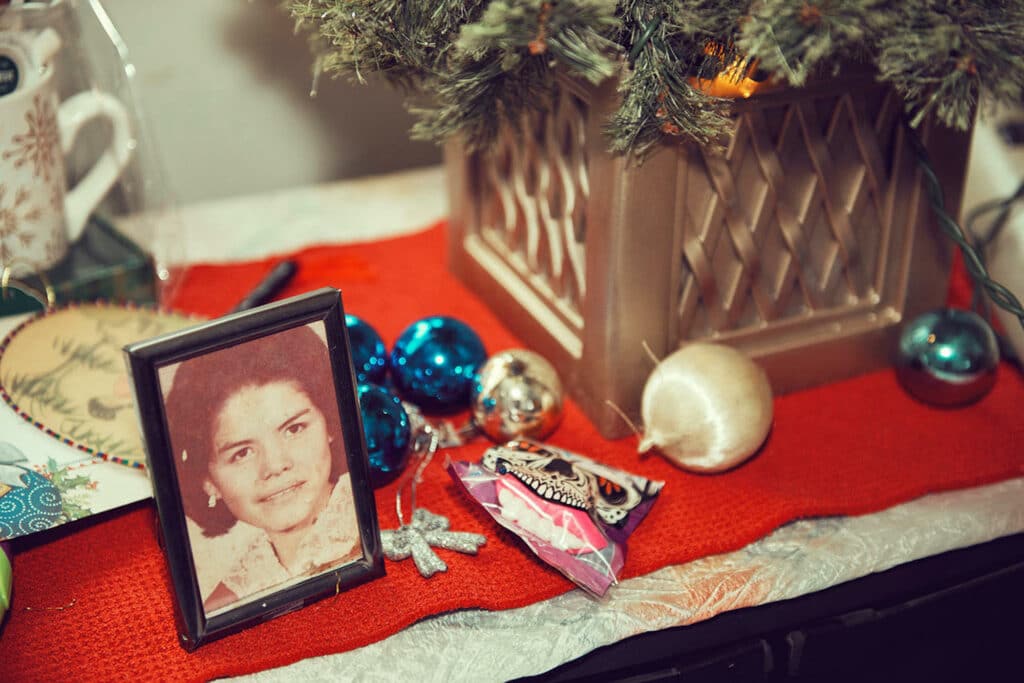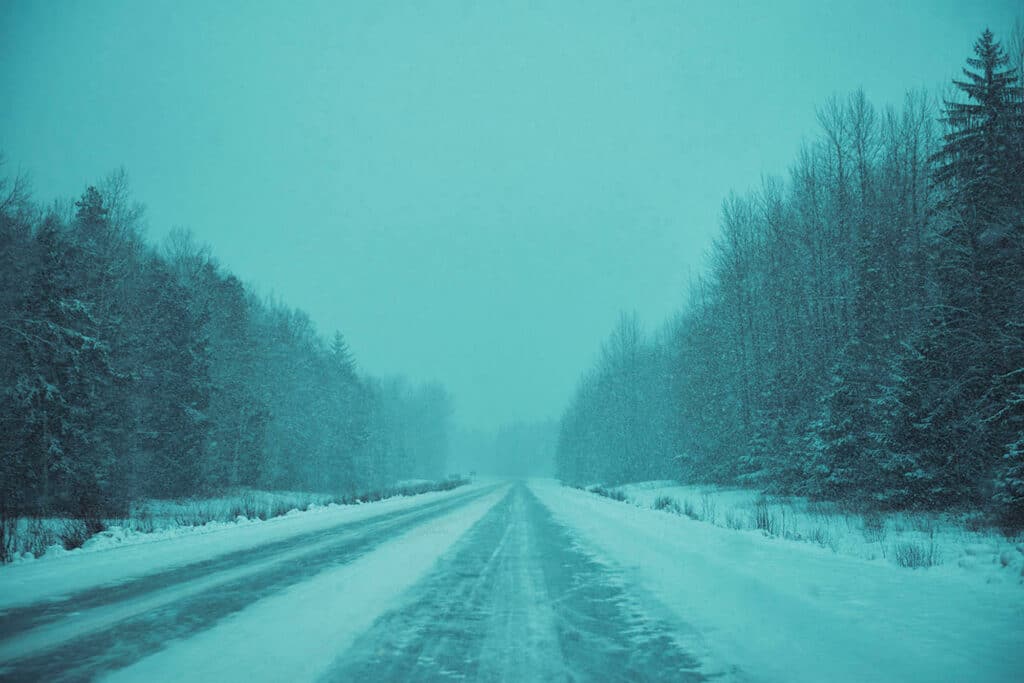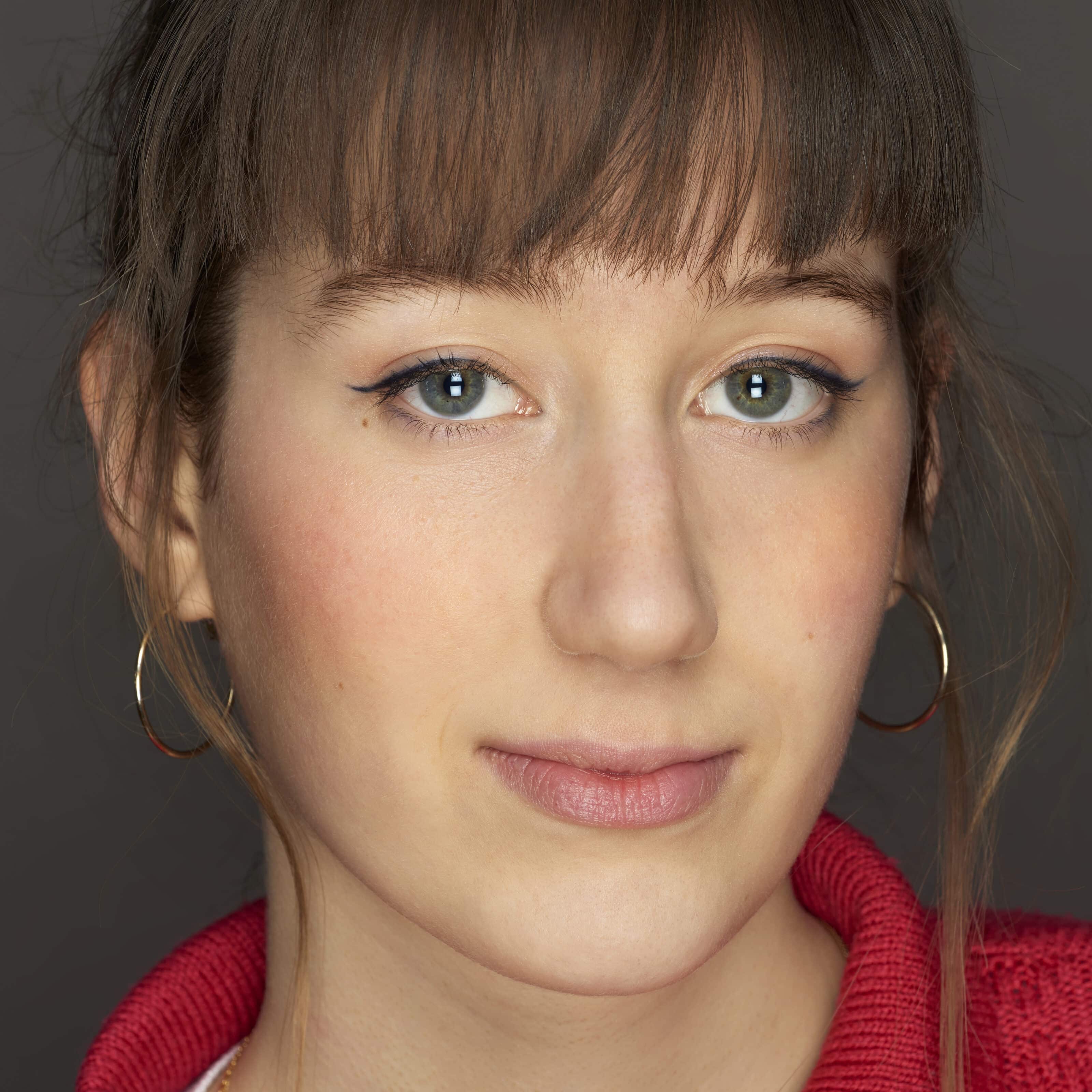“Terrace is the gates of hell… Out here is the other end of the rainbow.” Kourtney Roy had just arrived in the town of Terrace, British Columbia, Canada’s westernmost province, and exchanged these words with a local. According to an Irish legend, at the end of the rainbow there is a pot of gold. But what’s at the other end?
Roy is, first of all, driven by an obsession, by an idea as wild as her world. Her eccentric, colorful series are full of cynicism and imagination. On this occasion, however, she did not pose before her camera. Trading glamorous self-portraits for Hitchcockian settings, she undertook a photographic expedition to northern British Columbia.
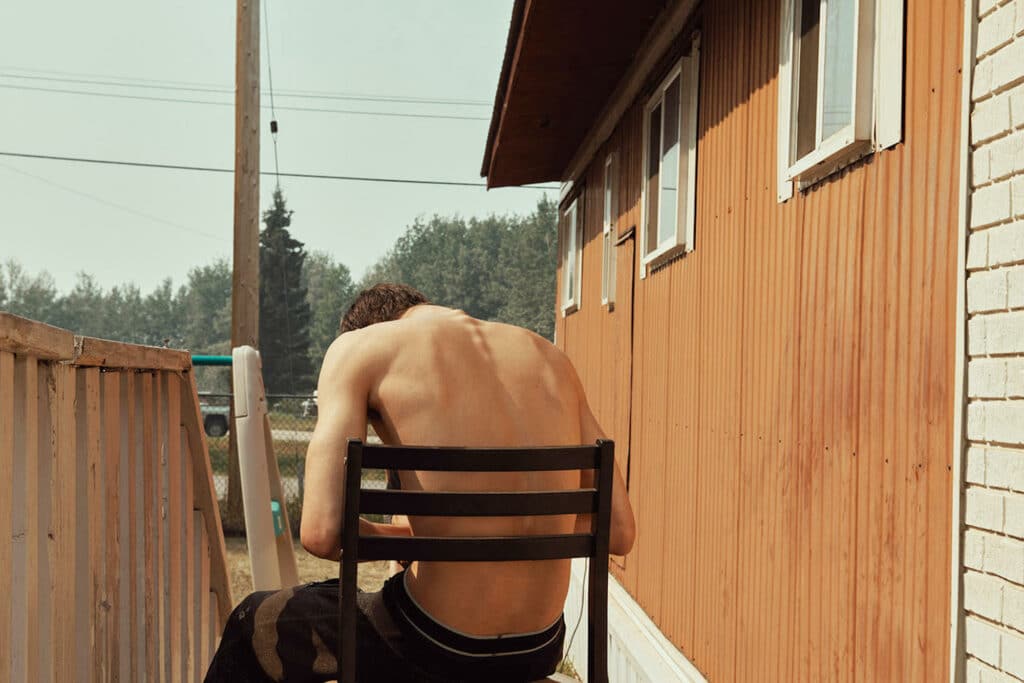
“I felt more empathy than fear”
Roy spent two years, all on her own, traveling up and down the “Highway of Tears.” Along this road many women, often Aboriginal, had disappeared or been murdered. Fascinated and horrified by this story, the Canadian photographer decided to do a project on the subject: “I felt compelled to go to the highway and see for myself what it was all about. It was necessary. So I went.”
Facing loneliness, fatigue, and paranoia, Roy forced herself not to give in to fear. She evokes, for example, her meeting with Lonnie, a witness to the murder of a young woman by several policemen. When Roy asked him to take her to the scene of the crime, she suddenly found herself “in the middle of nowhere with a strange man a rifle.” “There was no phone service. A chill ran down my spine: ‘This is how people die.’”
Yet, in talking to the relatives of the missing and of the murder victims, the photographer says, “Their lives were fundamentally torn apart, I felt more empathy than fear. I got to know these people, and many became friends.”
“A give-and-take between me, the highway, and the people”
For a long time, the media had shown no interest in these incidents, particularly because they involve women, and above all indigenous women. In addition, the families, who reside near the highway, tend to come from a lower socioeconomic background. Although Roy is aware that the subject appeals to feminist or political causes, her choice was neither militant nor committed. “I was interested in seeing what the highway revealed to me as a traveler relying on chance and possibility. … Even in terms of photos, I didn’t have a preconceived idea. … I guess it was really a give-and-take between me, the highway, and the people I met.”
Roy’s ambition was less to create a project than simply to capture a mood. “I’m not an investigative journalist and I don’t want people to think I’m an authority on the subject,” she says. “With the little knowledge I had, I went and did a project. That’s it.”
The road as a space for the imagination
The Other End of the Rainbow delves into a subject the photographer had tackled before. In her book Nothern Noir, Roy had photographed sites where crimes had been committed. Through the banality of the scene and the silence of the non-events, the artist captured the memory of the place.
The immense forests of Northern Canada, the endless roads, and the foggy landscapes become the backdrops to an unnamed film. On the road, past and present meet. As Roy falls asleep in her car, the memory of the victims disturbs the peace of the place. This silence is almost palpable in the photographs. Isolated in the mountains of Canada, Roy tamed that solitude. “It’s good for the soul, I think. And for creativity.”
Roy has managed to illustrate a macabre subject with images imbued with nostalgia and poetry. Like Alec Soth or Joel Sternfeld, she captures the aura of a seemingly ordinary place. Violence is in the emptiness—an emptiness that fascinates, disturbs, and appeals to our imagination.
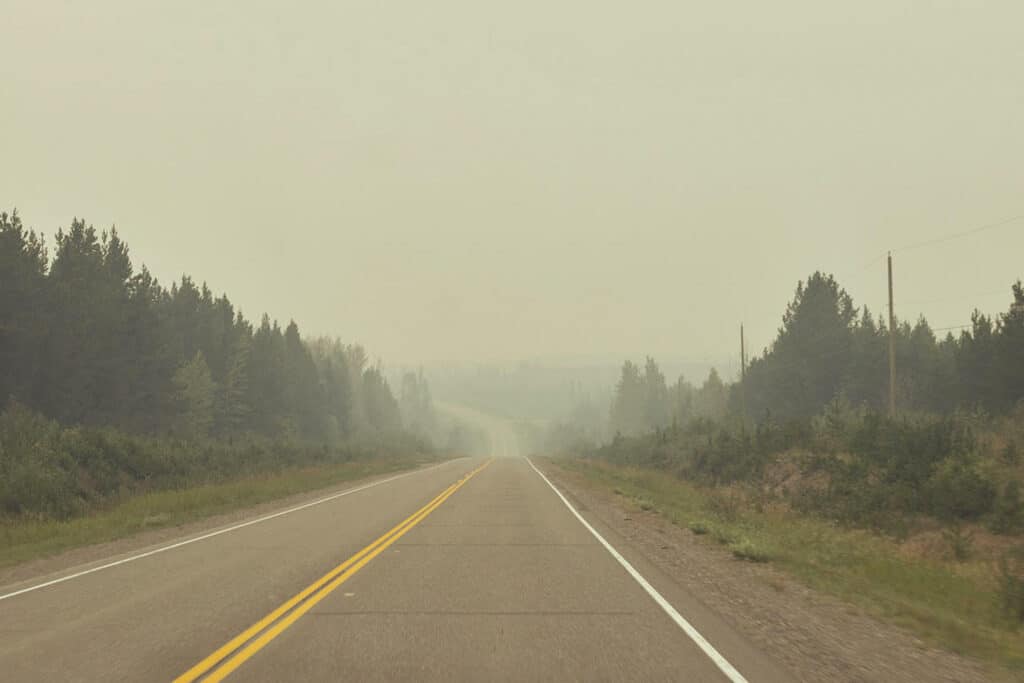
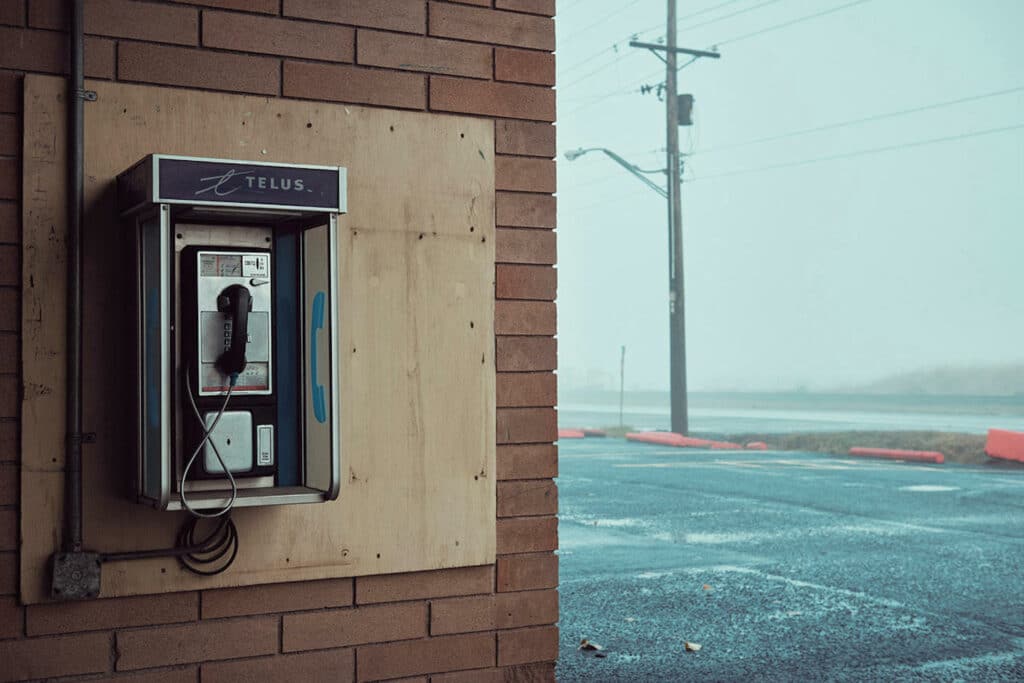
When silence fills all the space
Text is there to fill the silence of the images. The Other End of the Rainbow brings together three distinct voices: there are the known, verified facts; Roy’s notes jotted down in her journal; and finally excerpts from conversations with people she met along the way. Like snippets of conversations, these voices dialogue with and complement one another.
Speaking of the scope of her project, Roy explains that all this space was needed to try and tell the story of the victims. “This is my first big project. It took two years, but I could theoretically go on forever. But doing a 1,000-page book would not be very practical,” says the photographer. “Maybe in ten years, I’ll do a second book to see what has happened since I left. Because this violence goes on. It’s not history, it’s an ongoing issue, a current political issue.”
The Other End of the Rainbow, Kourtney Roy, André Frères éditions, 432 pp. 65 €

